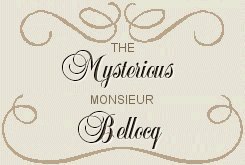
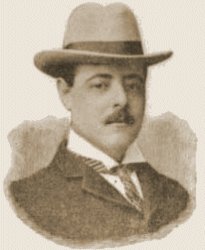 Ernest J. Bellocq (1873-1949) was a professional photographer who worked in New Orleans during the early 20th century. [Ernest Bellocq's 1872 baptismal record from Church of the Immaculate Conception, Archdiocean Archives, New Orleans. Note: There are two places in the baptismal record stating Bellocq’s full name. One entry gives his name as John Joseph Ernest Bellocq. The other entry gives his name as Joseph John Ernest Bellocq.] John Ernest Joseph Bellocq was born in a white Creole family in the French Quarter of New Orleans. Bellocq is best remembered for his photos of the prostitutes of Storyville, New Orleans' legalized red light district. The photographs show the subjects with grace and beauty not expected from their seamy context, though many also have a notable touch of melancholy. These photos which were little known during his lifetime; he made his living mostly by making photographic records of ships, machinery, and New Orleans Mardi Gras floats. From Wikipedia, the free encyclopedia. E. J. Bellocq's images, made circa 1912, continue to fascinate in part because of the ambiguity and mystery that surrounds them. What little is known about Bellocq is that he was born in the French Quarter of New Orleans in 1873 and died in 1949. He earned his living as a commercial photographer working for shipping companies. 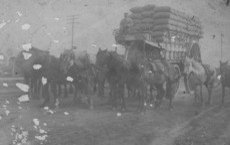 At the same time he was taking photographs of working women in the red-light district of Storyville. The district got its name from Alderman Sidney Story, who in 1898 decreed that prostitution should be legalised in the area. This was less a gesture of moral liberalism than one of pragmatic resignation. The decree was symptomatic of respectable society trying to find ways to control and confine a profession and its associated paraphernalia of gambling, drinking and crime, although at this time much of New Orleans' wealth originated in this area of town. There has been a great deal of nostalgic interest in this epoch of Storyville's history partly as jazz music was allegedly born at this time in its bars. Very little today is actually known of the people, and particularly the women, who worked there. Local enthusiast and historian Al Rose, who was to play a prominent role in the history of Bellocq's Storyville work, wrote on the area: "When I sought to learn more about Storyville and its contribution, if any, to the development of early jazz music, it didn't take me long to discover why nobody had ever written a history of the area. The public library's files of newspapers and periodicals had been vandalized, with countless issues carefully clipped, very likely by persons who had a stake in suppressing the information in them. In 1938, The TimesPicayune threw out its files of photographs."
At the same time he was taking photographs of working women in the red-light district of Storyville. The district got its name from Alderman Sidney Story, who in 1898 decreed that prostitution should be legalised in the area. This was less a gesture of moral liberalism than one of pragmatic resignation. The decree was symptomatic of respectable society trying to find ways to control and confine a profession and its associated paraphernalia of gambling, drinking and crime, although at this time much of New Orleans' wealth originated in this area of town. There has been a great deal of nostalgic interest in this epoch of Storyville's history partly as jazz music was allegedly born at this time in its bars. Very little today is actually known of the people, and particularly the women, who worked there. Local enthusiast and historian Al Rose, who was to play a prominent role in the history of Bellocq's Storyville work, wrote on the area: "When I sought to learn more about Storyville and its contribution, if any, to the development of early jazz music, it didn't take me long to discover why nobody had ever written a history of the area. The public library's files of newspapers and periodicals had been vandalized, with countless issues carefully clipped, very likely by persons who had a stake in suppressing the information in them. In 1938, The TimesPicayune threw out its files of photographs."
We have very little idea why these images were taken and what purpose, if any, they had. This is in part due to the fact that none of Bellocq's original prints have ever come to light. As John Szarkowski states: "It is possible [. . . ] that the Storyville pictures were a commercial assignment - perhaps as an equivalent of the standard theatrical publicity portrait, useful to the subject in seeking a position in a better house, or to the house in making its staff known to their potential customers. But the pictures themselves suggest that they were not made on assignment, but as a personal adventure. They possess a sense of leisure in the making, and a variety of conception not typical of photographic jobs done at the customer's request. It is more likely that Bellocq photographed the women of Storyville because he found them irresistably compelling." As Susan Sontag states: "The pictures are unforgettable - photography's ultimate standard of value. And it's not hard to see why the trove of glass negatives by a hitherto unknown photographer working in New Orleans in the early years of this century became one of the most admired recoveries in photography's widening, ever incomplete history." 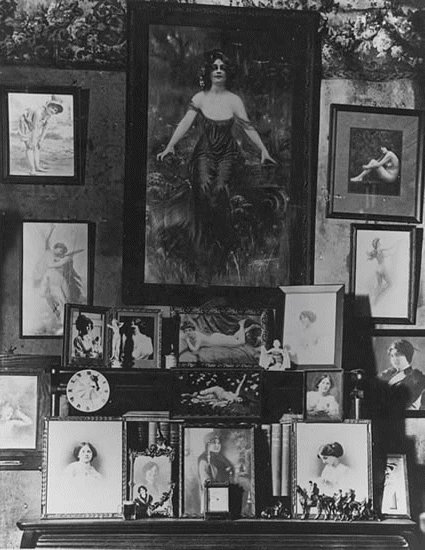
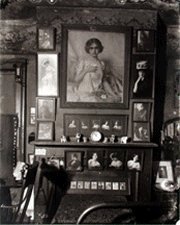 Two images of Bellocq's Desk. Notice the difference in pictures; evidently he liked to change things about now and again. Rex Rose recounts the last days of E.J. Bellocq, the legendary turn-of-the-century New Orleans photographer best known for his portraits of Storyville prostitutes. Rose also discusses recent research into Bellocq's life, which illuminates some of the myths and mysteries surrounding him. (Contrary to some accounts, Bellocq was not insane, retarded, a dwarf or hydrocephalic; he was of average-height, rather handsome, and ran a successful photography business for decades.) A new exhibit of Bellocq's work will open at the Julie Saul Gallery in New York in December, including several previously unseen photographs and recently discovered early prints. Two dozen thumbnailed illustrations accompany this article. (Link snagged from Wood's Lot.) Exquisite Corpse Vicki Goldberg reviews a current exhibition of E. J. Bellocq's "uncommonly relaxed, respectful, complicit and engaging portraits of female sex workers." The show at Julie Saul Gallery includes thirty-five prints that have never been exhibited, including four images that have not been published. "The sitters manifest an ease, a relaxed frankness with the camera and an occasional smiling happiness that defy the usual intense and tangled seductions of sexual advertising. Posing naked or in dishabille has an obviously erotic intent, but Bellocq's pictures are less highly charged than, and never as explicit as, popular French postcards of the time. Several of his subjects, though clearly meaning to entice, pose calmly and effortlessly, as composed as any sitter before a lens, in attitudes well-dressed women might adopt. One, concealed by voluminous underclothes, lies on her stomach and plays with a little dog." More about Bellocq. New York Times. (Jan 2002) The Last Days of Ernest J. Bellocqby Rex Rose In the early 1900s, Ernest J. Bellocq carried his 8 x 10-inch view camera across Basin Street to photograph the women of New Orleans' notorious district of legalized prostitution, Storyville. His private photographic project remained unknown until after his death, but eventually found its way to international acclaim. Yet virtually no prostitute portraits printed by Bellocq himself have surfaced. He kept his Storyville project secret from everyone except a few of his closest friends, and it remained secret until his glass negative plates were discovered languishing in a junk shop years after his death. In 1967, Master photographer Lee Friedlander acquired and began to make prints from Bellocq's glass negative plates, and the Museum of Modern Art hung an exhibition of them in 1970. Bellocq then took his place as the photography world's best-known photographer of prostitutes. Lee Friedlander's prints have always been our only view of Bellocq's corpus, but in December and January, the Julie Saul Gallery will exhibit a recently discovered collection of pre-Friedlander Bellocq prints. These older prints were made before many of the negatives sustained water damage during Hurricane Betsy, and many of the images have never been exhibited. Along with its intrinsic artistic import, the discovery of this cachet of early Bellocq prints has spurred new research on Bellocq that sheds some doubt on our current notions about him. In the dearth of information after Bellocq's Death, many almost mythic descriptions of him surfaced out of the alluvial New Orleans soil. Reports of Bellocq described him as insane, hunchbacked, grotesque, dwarfish, or hydrocephalic, leaving the world with not much choice but to consider him a virtual New Orleanian counterpart to Toulouse Lautrec. Legend also held that Bellocq's brother a Jesuit priest, was responsible for violently scratching many of the women's faces from the emulsion. Yet new research sheds some doubt on all of these ideas. Late September, 1949: a short, fat old man shuffles out of the front door of the Federal Reserve Bank in New Orleans' Central Business District. Perhaps he has been considering opening another bank account there, even though he already has eighteen forgotten ones, at various other banks, with balances ranging from a dollar and change to over six hundred. But the fair skinned, ruddy-faced old man feels under the weather today. Maybe that's why he walked away from the teller without opening another account, this time. He wears a piece of rope for a belt, and seems disoriented at the top of the short flight of stone stairs. Today, for some reason, his usual walk around the city to every camera shop in town has exhausted him. But he never takes the public transportation--doesn't trust it. Nearly every day, he hobbles all the way up to the bus station on foot for his lunch, and gets a bag of orange jelly slice candies, which he knows is bad for his diabetes. Then he heads for the Kodak store where he falls asleep in a chair. When Manuel's boss gets tired of his snoring, he wakes him up and puts him out. But today E.J. Bellocq feels more than his seventy-six years. His stoop seems more severe; his tiny steps shorter and his little upper apartment on Dumaine Street, in the French Quarter, seems farther away. At the top of the stairs, Mr. E.J.'s face goes blank. He falls down the short flight of steps, and his high forehead hits the pavement. The news circulates around the camera stores: "Old Bellocq just dropped dead on Canal Street!" Joe Sanarens is standing behind the counter at the Katz and Besthoff Camera center when he gets the word. Sanarens may be the closest person in the world to Bellocq, other than Bellocq's brother, but that is not necessarily very close. E.J. was a pretty hard guy to get to know. He hardly warmed up to anybody. But when Sanarens was sick in Hotel Dieu, a Catholic hospital, Bellocq actually walked all the way up there to visit him. Joe could hear him hollering "Where's Sazerac" at the nuns in the hall. Sanarens was so surprised to see Bellocq there that he didn't care if he got his name wrong. On one occasion, the old bachelor even brought Joe back to his apartment at 619 Dumaine, and showed him a secret that shocked him even more than had Bellocq's trip to Hotel Dieu to visit him. The old man had squirreled away an old trunk full of 8 x 10-inch glass negative plates--pictures of whores from the old red light district, Storyville, which had been closed by the Navy almost thirty years before. Lots of the women in the pictures were naked. Bellocq flipped through a stack of pictures, occasionally stopping at different photographs of one particular woman and saying "…and this one is Adele." Bellocq probably spoke French but when Sanarens knew him he spoke with a New Orleans accent, which sounds much like an Irish New York accent. He also showed Joe some documentary-style pictures of New Orleans' China Town, one of them of the inside of an opium den with lacquered bunks--pretty remarkable pictures. Joe knew Bellocq as a man who could not even get a good picture of the streetcar when it was decorated to sell war bonds. While handling E.J.'s photo processing, Sanarens once got a look at a whole batch of Bellocq's negatives of the back end of that streetcar, it having invariably pulled away by the time Bellocq had gotten the exposure and focus right. He always kept trying, though. He was a stubborn old man. Joe will not miss the sound of old Bellocq slamming his array of rubber-stamps down, much harder than necessary, on the envelopes that contain his negatives and prints. But when Joe hears of Bellocq's death, he probably feels a little sad that he can't return the visit Bellocq had paid him when he was in the hospital, E.J. having gone so suddenly like that on Canal Street. But Bellocq had actually fallen on Barrone Street. He was not dead yet, either, and lingered in the hospital for over a week. But details like these turned out to be unimportant. Nobody cared much about Bellocq. He was a nobody--an old photographer, slowly going senile while living off of a small annuity income, who wandered around downtown, frequented camera stores, and kept trying, well into his seventies, to talk to the pretty young women photographers who frequented the camera stores. He died without issue, and nobody gave him a second thought. Twenty years later, the Museum of Modern Art gave Ernest Bellocq a one-man show after photographer Lee Friedlander acquired his plates and began to print them on a period paper. Friedlander immediately realized the importance of the images, and Bellocq's private Storyville photographic project, for the first time, was able to join the public artistic forum in the post-sexual-revolution 1970s. As of this writing, Lee Friedlander still prints from Bellocq's negatives on gold-tone printing-out paper. Prints from Bellocq's own commercial studio, however, were dry-mounted to dark gray mat board with an embossed studio logo au recto on the lower right corner. Verso, he imprinted the board with a circular ink stamp, and the prints themselves have a warm tone. Their subject matter ranges from architecture, to class portraits, to grave plots, to copy work for museums. Though the international photographic community now recognizes Bellocq the artist, his New Orleanian photographic contemporaries had not the slightest idea that photography, itself, might one day win the status of a fine art form, and neither did Bellocq. The idea that Bellocq's photographs might one day hang in a major New York museum would have been considered ridiculous. The photographs alone held interest for Friedlander, but inevitably many questions surfaced about the man behind them. Unfortunately, too many had answers. An elegant, collective, mythopoeic process went into action during which, on the strength of a few descriptions of Bellocq's appearance and personality, he became a full-blown, Paul Bunyanesque myth. His high forehead became the grotesque head of a hydrocephalic. The senility of old age became insanity or mental retardation. His short stature became dwarfism, and his stoop was even described as a hunchback. None of it seems to be true. Hydrocephalics died soon after birth or suffered severe mental retardation in the eighteen seventies, when Bellocq was born. The best picture of Bellocq shows him wearing a hat, but (working under the assumption that it was hiding something) any of the genetic syndromes that cause cranial defects also have corresponding facial characteristics, which are absent in his portrait. He was also described as senile by a doctor shortly before his death, and his life as a successful commercial photographer makes obvious the impossibility of Bellocq having been insane or retarded during his working life. This "dwarf," by all accounts, even in his mid-seventies, after the age at which most normal older people lose some of their height, and even with the stooped posture he developed, was always described as standing between five feet and five feet two inches tall. He could have stood five and a half feet tall in the heyday of Storyville, and considering that the mean height in the nineteenth century was quite a bit shorter than it is today, Bellocq was probably quite an average man, if not a bit more handsome. The men in the ambulance take Bellocq, bleeding from a cut on his forehead, to Charity Hospital 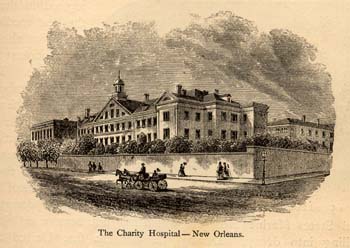 where he is unable to give the doctors any information. (The description of his head-wound on the medical record mentions nothing abnormal about the form of his head or body.) He stays there until they discover that his next of kin, his seventy-four-year-old little brother Leo, is a Jesuit Priest, at which point the attending doctor transfers him to Mercy Hospital.
where he is unable to give the doctors any information. (The description of his head-wound on the medical record mentions nothing abnormal about the form of his head or body.) He stays there until they discover that his next of kin, his seventy-four-year-old little brother Leo, is a Jesuit Priest, at which point the attending doctor transfers him to Mercy Hospital. When Ernest speaks he doesn't make much sense, and Leo realizes that this is just about the end. Brother Leo has had to watch for years as his brother declined, so Ernest's fall is not much of a surprise. Even though Ernest's taste in clothing and jewelry in his younger years diverged from what a Jesuit would approve of--like the diamond horseshoe stick-pin with eleven diamonds, the gold lady's-head cufflinks with the matching tie clasp, or the flashy, red scarves that were much too ostentatious--it has been much harder for Leo to watch as Ernest turned into a confused and disheveled old man. He would have never entertained the thought of wearing a rope for a belt back when he was the promising young scion of a good family. Ernest and Leo grew up in aristocratic, white Creole family. Marie, their mother, was the daughter of a wealthy merchant from France, and their father, Paul, supported the family in the French Quarter in a very nice style with his job as a bookkeeper and, later, as secretary and treasurer for a wholesale firm. They even employed a middle-aged nurse named Lucille Mario. The French Opera House acted as the cultural nexus for the Creole community in New Orleans. Even school-age children attended the spectacle as the building filled with thousands of people in formal attire. The Bellocqs lived so close to the French Opera that they may have left the carriage at home in favor of walking. Ernest never made the honor rolls in school, like Leo, but he completed ten years of classical education at the College of the Immaculate Conception, 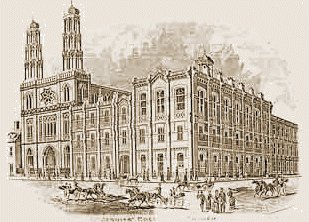 at which point his father got him a job at the firm. But Ernest was restless and moved between jobs frequently, working as a bookkeeper or clerk at different businesses in or around the French Quarter.
at which point his father got him a job at the firm. But Ernest was restless and moved between jobs frequently, working as a bookkeeper or clerk at different businesses in or around the French Quarter.He had already become obsessed with photography, and by 1898 the city had recognized him as one of its most knowledgeable, popular and talented amateur photographers. That was the year Storyville opened for business, and a picture of Ernest Bellocq handsome and dapper at age twenty-five, appears that year in a local publication. The publication asserts that "Mr. Bellocq. . .is a descendant of one of our most aristocratic Creole families, and has entree to the most exclusive of social functions." In 1902, Bellocq's mother died. Around this time, E.J., nearing the age of thirty, quit his job and concentrated upon his real interest: photography. With his mother deceased, the family house to himself, and his brother off studying for the priesthood at Spring Hill, his new freedom allowed him to follow his eye. In constant proximity to Storyville, Bellocq often ventured one block from his front door into the legally sanctioned district of prostitution. Bellocq is reported to have said to a friend "that he had always spent every cent he got." (Gehman, page 34) Perhaps he started that habit in Storyville. Bellocq often wore a flamboyant red neckerchief or scarf in the old days, and he also owned many pieces of monogrammed jewelry. Perhaps Bellocq fancied himself as a bit of a Storyville dandy. He eventually became a professional photographer, and even for a time had his studio downtown on Canal Street, the city's main commercial thoroughfare, before reestablishing his studio in the furnished room he later moved into. For a few years during WWI he opted for steady work as an industrial photographer for a shipbuilding company, but he always stayed close to the church. He often photographed its buildings and classes of Catholic school children. 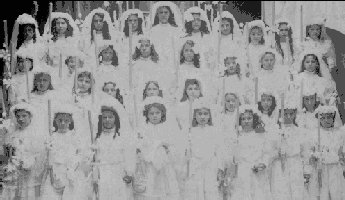 A few days after Ernest gets admitted to Mercy, he dies of just about everything: cerebral arterio-schlerosis, diabetes, obesity, a concussion, senility, and old age. Leo has him put in the little, house-like family tomb near the park. Soon afterward, a notary and a witness, Augusta Bonnecaze, probably the daughter of Paul Bellocq's partner, go to view the contents of Ernest's safe deposit box. They find no will. They do find a locket--maybe the same locket that appears around the necks of some of Bellocq's models. Leo picks up the woman's diamond rings with Tiffany settings, which Marie probably left to Ernest in futile hope of him one day marrying, and realizes he hasn't seen them since they circled his mother's fingers. A rosary lies among the old broken watches and jewelry.
A few days after Ernest gets admitted to Mercy, he dies of just about everything: cerebral arterio-schlerosis, diabetes, obesity, a concussion, senility, and old age. Leo has him put in the little, house-like family tomb near the park. Soon afterward, a notary and a witness, Augusta Bonnecaze, probably the daughter of Paul Bellocq's partner, go to view the contents of Ernest's safe deposit box. They find no will. They do find a locket--maybe the same locket that appears around the necks of some of Bellocq's models. Leo picks up the woman's diamond rings with Tiffany settings, which Marie probably left to Ernest in futile hope of him one day marrying, and realizes he hasn't seen them since they circled his mother's fingers. A rosary lies among the old broken watches and jewelry. Then the trio goes to E.J.'s musty apartment. Much of Ernest's furniture is broken, and many of the lamps and pieces of photographic equipment are also in pieces or broken. They probably find the 8 x 10-inch negative plates bearing the images of the women of Storyville, but they don't list them in the succession. The images are considered pornographic and illegal at the time. Leo is Ernest's sole heir, and the negatives end up, at some point, in Sal Ruiz's antique shop. They may pass through several hands before Lee Friedlander gets them from Larry Borenstein. Borenstein has them stashed in the deteriorated bathroom in the old slave quarters behind Preservation Hall, which was photographer Pops Whitesell's studio at one time. Apparently the roof leaks back there, too, because some of the plates get water-damaged in Hurricane Betsy. But somewhere along the line, an unknown hand had also scratched many of the women's faces from the fragile emulsion. Everyone who gave it a thought assumed that Leo had vandalized the plates as soon as he acquired them in order to protect the identities of the women, many of whom went directly to the society page after Storyville closed. But, in many cases, Bellocq photographed the same woman twice, and while one negative sustains damage, the other remains untouched, thus her identity still remains obvious. In all likelihood, Leo, being Ernest's sole heir, also had complete control of his life's work directly after his death. If protecting identities was his motive, why would Leo have randomly scratched out a face, here and there, instead of taking a hammer to the whole collection? Leo was active in the Sodality of the Immaculate Conception, a moralist organization, back when he was in school. But that was in the 1880s, and, again, a fire-breathing moralist would have destroyed the negatives rather than selectively scratching the faces. Recently, Lee Friedlander has re-examined the plates and tried to duplicate the scratching with a sample area, but the emulsion flaked off instead of scratching. The emulsion around the original defacement in some areas is folded over gently, and could only have done so when wet. Therefore, E.J. Bellocq probably defaced the negatives shortly after he developed them in the early 1900s. In one photograph, however, a woman wears a carnival mask that has been incongruously positioned to hide her eyes, possibly echoing some ambivalence that made Bellocq scratch the faces from so many of the negatives. Yet the approach to the women's faces is not the only curious aspect of Bellocq's Storyville work. In one pair of photographs, a woman stands clothed in the first image in front of heavy wooden doors, but in the second image, she is nude, her face has been scratched from the negative, and a heavy couch has been pushed in front of the door. A locket, another repeating motif in Bellocq's Storyville work, also becomes visible in the second image. One of Bellocq's defaced nudes is actually shown examining her locket. But the pair of images mentioned above is not the only example of couches in front of doors in Bellocq's Storyville nudes. One such image shows clearly that there is already a lock on the door, and a cord from an electric light has further been wrapped around the lock in what looks like a final obsessive attempt at privacy. Why would Bellocq feel the need to use a couch, a lock, and a wire to keep the door shut in an expensive brothel? Rugs used as hasty partial backdrops and, in one case, sawhorses also suggest that Bellocq may have intended to drop the backgrounds from his images, vignette, or otherwise alter the images to imitate the saccharine romantic photographs and paintings he hung on his walls. In fact, one of Bellocq's portraits is clearly shown vignetted and framed in one of the two studies of his desk. The style of the romanticized images of women that surrounded his desk certainly informed his eye, yet his failures to imitate it mark his work as reflexively modernist. This inability to force his vision into the mold of his conscious influences has kept his work alive, against all likelihood, though circumstances almost dictated the dustbin as its final destination. One of his images presents a woman visiting a sick colleague, probably at the isolation hospital for victims of socailly transmitted diseases. When we consider that Bellocq followed these women to the hospital, carrying a bulky 8" x 10" view camera, it suggests a strong documentary dimension to his work as well and shows that he had much more than just a prurient interest in his subject matter. Regardless of the idiosyncrasies of Bellocq's Storyville work, we see these women through the eyes of a man who grew up a block and a half from their rooms, which were both living space and workplace, in the most outrageous district of prostitution the country has yet seen. Yet we should realize that from Storyville's over-done and opulent Victorian pleasure palaces, to the blazing light of the saloons, to the abject, by-the-hour cribs and resulting trips to the confessional and/or isolation hospital--all of this was simply the normal way of the world to Bellocq. It was his neighborhood. The qualities that may strike us as paradoxical in his work may not have been paradoxes to him at all. He showed a stark yet compassionate frankness, and refused to glamorize or objectify the women. Yet he makes no moralistic plea for the fallen woman. On the contrary, these portraits sharply capture a raw chaotic space of humanity, necessity, and sexuality, pushing Bellocq's work beyond his half-hearted attempts at pictorialism to the cusp of modernity. He reached into outrageous situations, and from them pulled existential gems of clarity. 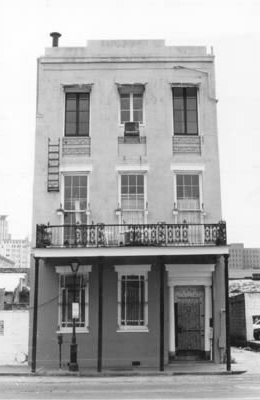
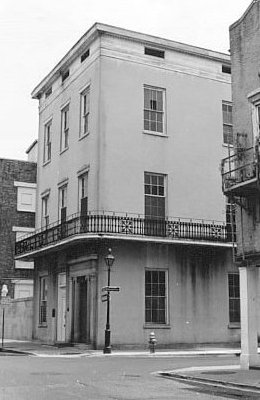
Two of Bellocq's homes. At left, 1026 Conti had only two floors when Bellocq was a child and stood in a row of three identical buildings. In 1906, he moved to 840 Conti, shown at right. Click on images to enlarge. 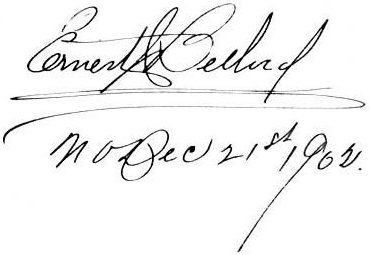 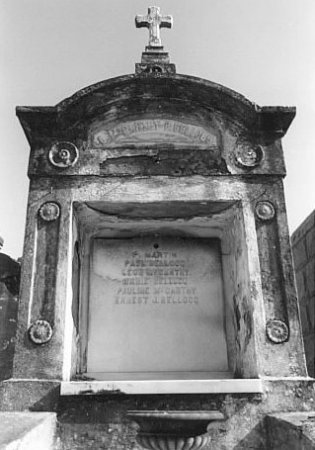 Ernest Bellocq's body now lies in the family tomb across the Bayou from the New Orleans Museum of Art, where he never dreamed his private photographic project would one day hang. Bellocq was burried in Saint Louis Cemetery #3 in New Orleans. 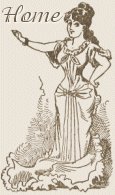 Tripod |